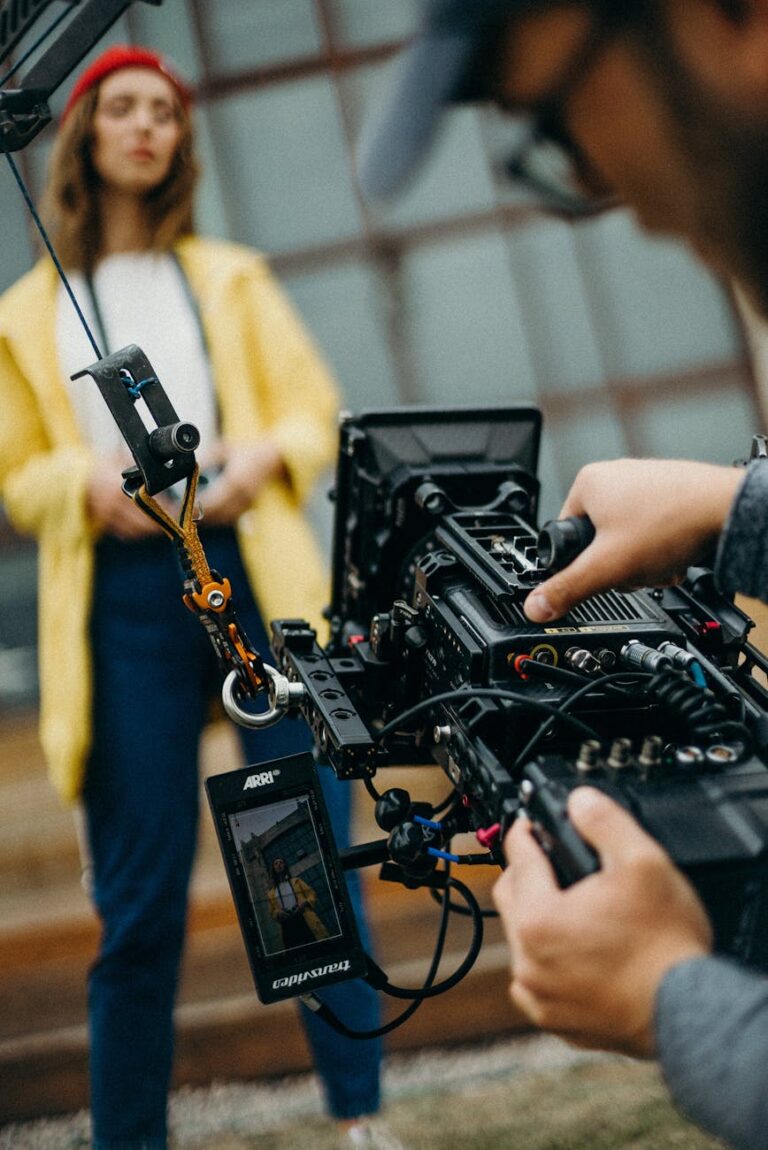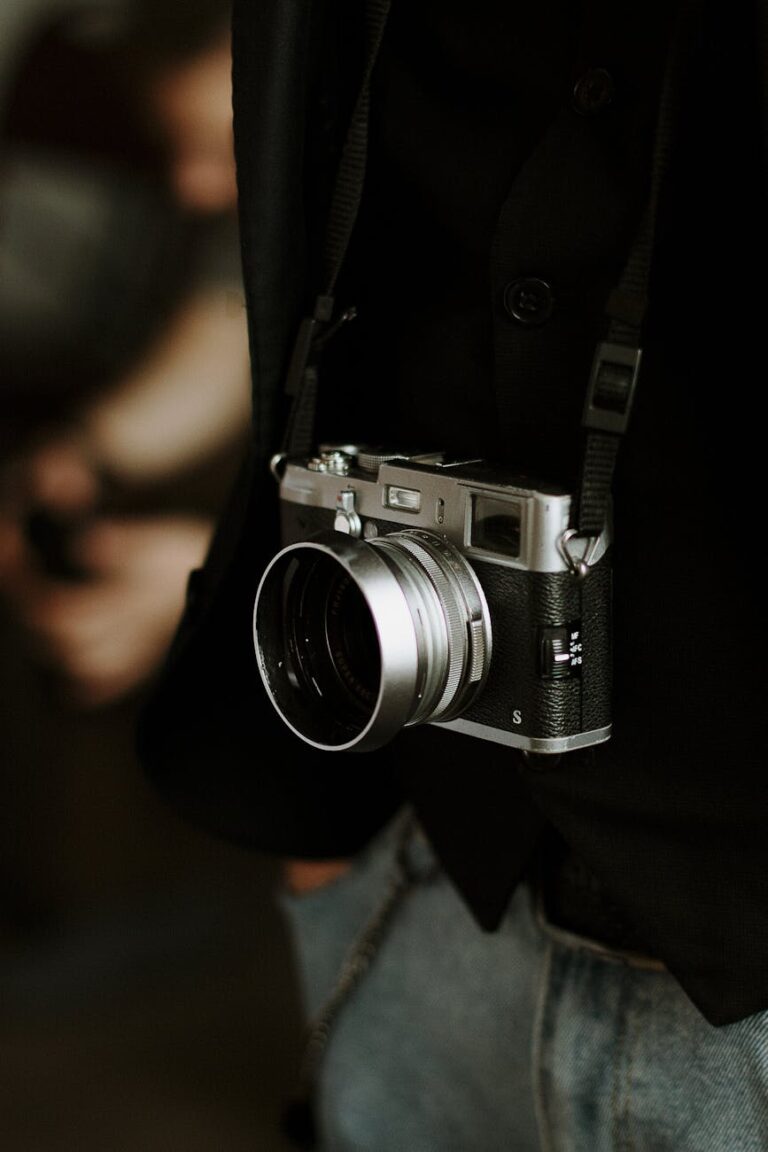Shining Through: How to Clean Camera Lens for Crisp, Clear Images

Photo by Alexander Andrews on Unsplash
Lens Cleaning Basics
Understanding the basics of lens maintenance is vital for photographers who aim for crisp, clear images. Keeping a camera lens clean not only enhances image quality but also extends the lifespan of the equipment.
Importance of Lens Cleaning
Keeping a camera lens clean is crucial for any photographer looking to capture high-quality images. Dirt, dust, and fingerprints can accumulate on your lens, leading to decreased image clarity, visible smudges, and even imperfections in your footage. If not addressed, these issues can escalate and potentially cause permanent damage to the lens. Frequent cleaning is thus essential to preserve the integrity of photos and the functionality of the lens (Great Big Photography World). For advice on the best way to clean camera lens, visit our detailed guide.
Frequency of Cleaning
How often you should clean your camera lens depends on several factors, including the frequency of use and the environments in which your camera is exposed. Generally, lenses should be cleaned every 1-2 weeks. However, if the camera is used in environments prone to dust, humidity, or other contaminants, cleaning after each use is advisable. Wildlife photographers, for example, might find themselves cleaning lenses more regularly due to exposure to various outdoor elements. Proper maintenance using a camera lens cleaning kit or methods such as cleaning camera lens with alcohol can help maintain the lens’s optical performance over time.
| Environment | Recommended Cleaning Frequency |
|---|---|
| General use | Every 1-2 weeks |
| Dusty/Humid conditions | After every use |
| Wildlife/Outdoor photography | After every use |
Effective lens cleaning is a key aspect of camera care. A well-maintained lens will ensure that each photo session yields the best results, with minimal post-processing work required to rectify avoidable blemishes. For more information on cleaning specific types, such as cleaning DSLR lenses, be sure to explore our resources.
Tools for Cleaning
Possessing the right cleaning equipment is critical for anyone wondering how to clean camera lens effectively. These tools not only ensure that the lens is cleaned safely, but they also help maintain the quality and longevity of the camera equipment.
Essential Cleaning Supplies
Every photographer should have a basic set of cleaning supplies on hand. These are fundamental items that can be used regularly to keep lenses free from dust, smudges, and other contaminants. According to Great Big Photography World, even household materials can be utilized for this purpose. Below is a list of essential supplies recommended for safe and effective lens cleaning:
| Supply | Usage |
|---|---|
| Air Blower | To remove loose dust and debris without touching the lens surface. |
| Soft-Bristled Brushes | For gently brushing away particles. |
| Microfiber Cloth | To clean the lens without scratching it. |
| Camera Lens Wipes | For a quick and effective clean when on the go. |
| Cleaning Fluid | To remove stubborn marks and fingerprints. |
These items form the foundation of a camera lens cleaning kit and are suitable for routine maintenance of your camera’s lens. It’s essential to use these tools with care, ensuring that the lens is not scratched or damaged during the cleaning process.
Professional Cleaning Tools
For those seeking a more thorough cleaning or dealing with stubborn dirt, professional cleaning tools are recommended. These specialized items are designed for photographers who need to clean their lenses frequently and require a higher level of precision.
According to Epidemic Sound, professionals often use the following tools:
| Tool | Description |
|---|---|
| Dust Blower | A more powerful option for removing dust particles. |
| Compressed Air | For dislodging dirt from hard-to-reach areas. |
| Disposable Wipes | Convenient for cleaning without leaving residue. |
| Pre-Moistened Wipes | Individually wrapped wipes with the right amount of cleaning fluid. |
| Lenspen | A tool with a fine tip for detailed cleaning. |
These professional tools are essential for maintaining the cleanliness and quality of camera lenses, especially in the case of cleaning DSLR lens. When selecting a cleaning tool, it is crucial to choose one that is appropriate for the type of dirt and the level of cleaning required. For a comprehensive solution, ready-made cleaning kits such as the Zeiss Lens Cleaning Kit or the Altura Photo Professional Cleaning Kit offer convenience and portability, containing items like lens cleaning solution, a lens brush, microfiber cloths, and an air blower (Conservation Visuals).
Whether you are using basic supplies or investing in professional tools, it’s important to follow the best way to clean camera lens to ensure that your photography equipment remains in pristine condition. Always use products as directed and keep your cleaning tools clean and well-maintained for the best results.
Proper Cleaning Techniques
Maintaining the clarity of camera lenses is paramount to capturing crisp, clear images. Proper cleaning techniques not only help preserve the quality of photographs but also extend the lifespan of the lenses.
Safe Cleaning Practices
Adopting safe cleaning practices is essential when handling camera lenses. Begin with using a blower to gently remove any loose dust or debris from the lens surface. This non-contact method is often the first and safest step in the cleaning process.
Once the loose particles are cleared, use a soft, lint-free microfiber cloth to remove smudges or fingerprints. It’s advisable to use a fresh cloth each time to avoid transferring oils or dirt back onto the lens. For more persistent residue, a few drops of a specialized lens cleaning solution can be applied to the cloth before wiping the lens in a gentle circular motion.
When using liquids, it is crucial to ensure that the solution is appropriate for lens cleaning. A recommended solution is a mix of equal parts 99% Isopropyl Alcohol and distilled water (Adorama). This mixture should be applied to the cleaning cloth, not directly onto the lens, to prevent excess liquid from seeping into the lens housing.
For photographers who frequently find themselves in harsh environments, utilizing UV filters can provide an extra layer of protection for the lens. Changing these filters when they become dirty can keep the actual lens clean and reduce the need for frequent cleaning (Quora).
Avoiding Damaging Actions
To prevent potential damage to camera lenses, certain actions should be strictly avoided. Refrain from using canned air, as the force of the air can push debris into the lens elements, causing scratches or internal damage. Similarly, reusing microfiber cloths or lens tissues can introduce previously-removed particles back onto the lens surface.
Never spray cleaning solutions directly onto the lens. The excess fluid can penetrate the lens assembly, leading to internal damage. Moreover, household soaps and detergents are not suitable for lens cleaning due to their abrasive and corrosive properties, which can degrade the lens coating (Epidemic Sound).
Lastly, resist the temptation to use clothing or unspecified materials to clean lenses. These fabrics can be too rough and can leave behind lint or worse, scratch the lens.
By adhering to these safe cleaning practices and avoiding harmful actions, photographers can ensure the longevity and performance of their camera lenses. For those seeking a comprehensive set of tools, investing in a quality camera lens cleaning kit is highly recommended. For further guidance on the best way to clean camera lenses, exploring articles dedicated to cleaning DSLR lenses and cleaning camera lenses with alcohol can provide additional insights.
Advanced Cleaning Tips
Maintaining the quality of your camera not only involves keeping the lens pristine but also requires attention to the camera’s sensor and specialized lens services. These advanced cleaning tips will help ensure that your camera operates at its best for capturing crisp, clear images.
Sensor Cleaning
For photographers looking to preserve image quality, sensor cleaning is a critical maintenance step. Dust and debris on the sensor can result in spots and blemishes in photos, making it vital to keep the sensor clean. While many cameras boast self-cleaning sensors that vibrate to dislodge dust, these mechanisms may not always be adequate. They might merely redistribute dust or fail to remove particles that are firmly adhered to the sensor.
For a more thorough cleaning, professional sensor cleaning services are recommended. Perfect Image Camera provides a comprehensive 5-point sensor cleaning process for $64.99, which includes:
- Thorough cleaning of the sensor
- Cleaning of the mirror and mirror box
- Cleaning of the external body
- Autofocus and exposure checks
This service is available for walk-in customers at their Lancaster, PA location or online with a 48 business hour turnaround time in the US (excluding Alaska, Hawaii, and Puerto Rico).
For those who prefer to clean the sensor themselves, it involves placing the camera in sensor cleaning mode and using a sensor cleaning swab with a suitable cleaning solution. Gently wipe the sensor in a straight line, meticulously following the manufacturer’s guidance to prevent damage. For detailed instructions on sensor cleaning and the tools needed, visit our page on cleaning DSLR lens.
Specialized Lens Services
In addition to regular cleaning, specialized lens services can enhance the performance and longevity of your camera lenses. Canon, for instance, offers two levels of professional lens services:
- Lens Service – Standard: Includes cleaning of external lens optics and body, lens attachment and removal check, and camera/lens communication check. (Canon Europe)
- Lens Service – Premier: Encompasses everything in the Standard service plus AF adjustment to the default value using a Canon tool body or focus match using your camera body.
These services ensure that your lenses function optimally, whether you’re dealing with routine upkeep or more intricate issues like autofocus adjustments. Additionally, professional lens services often include an assessment of the lens’s overall condition, providing peace of mind that your equipment is in top shape.
For those who frequently use their camera in challenging environments or simply want to guarantee the best possible performance from their lenses, investing in professional lens services can be a wise choice. To learn more about the essential tools required for camera and lens cleaning, explore our camera lens cleaning kit page, or find out the best way to clean a camera lens with our dedicated guide.


